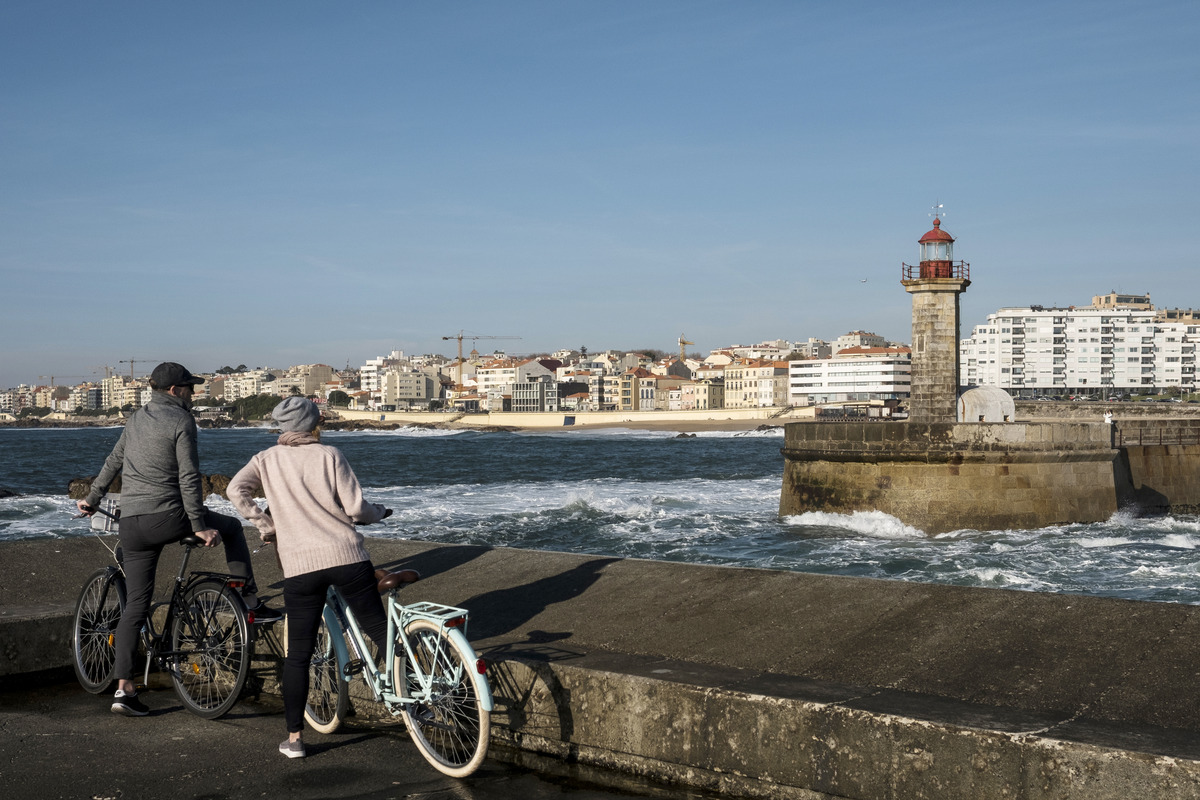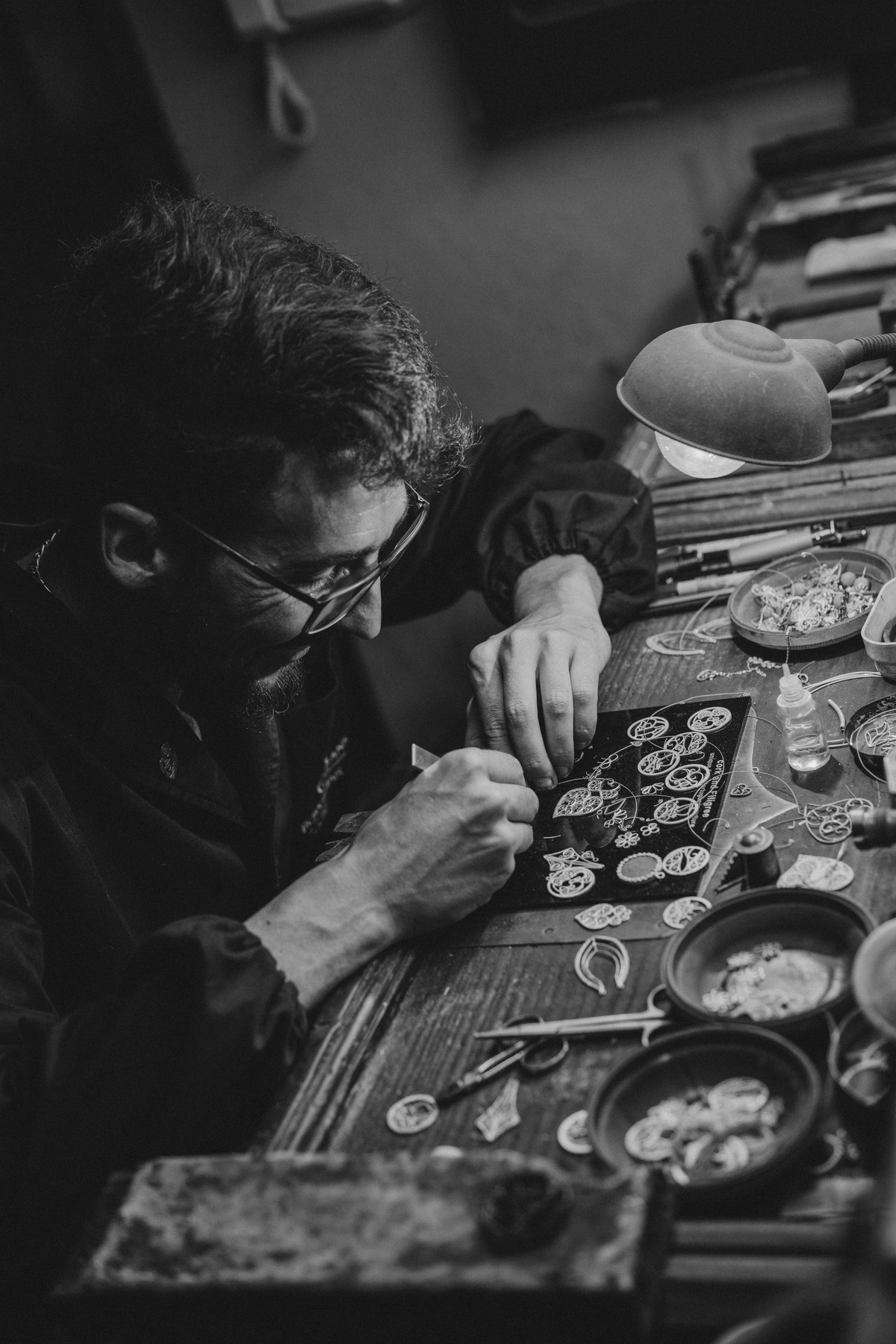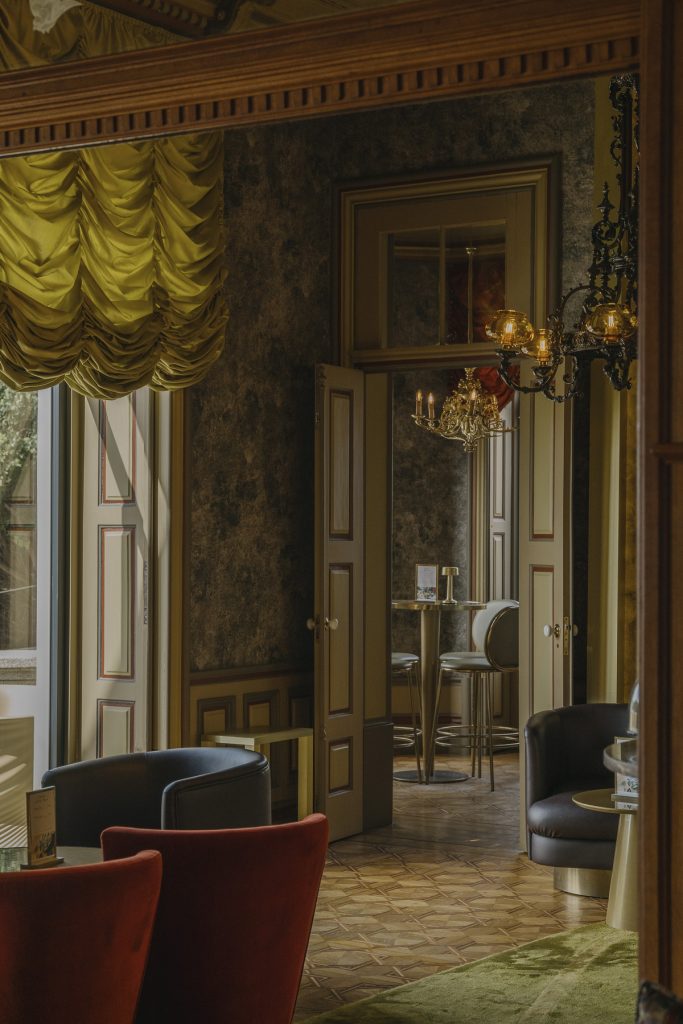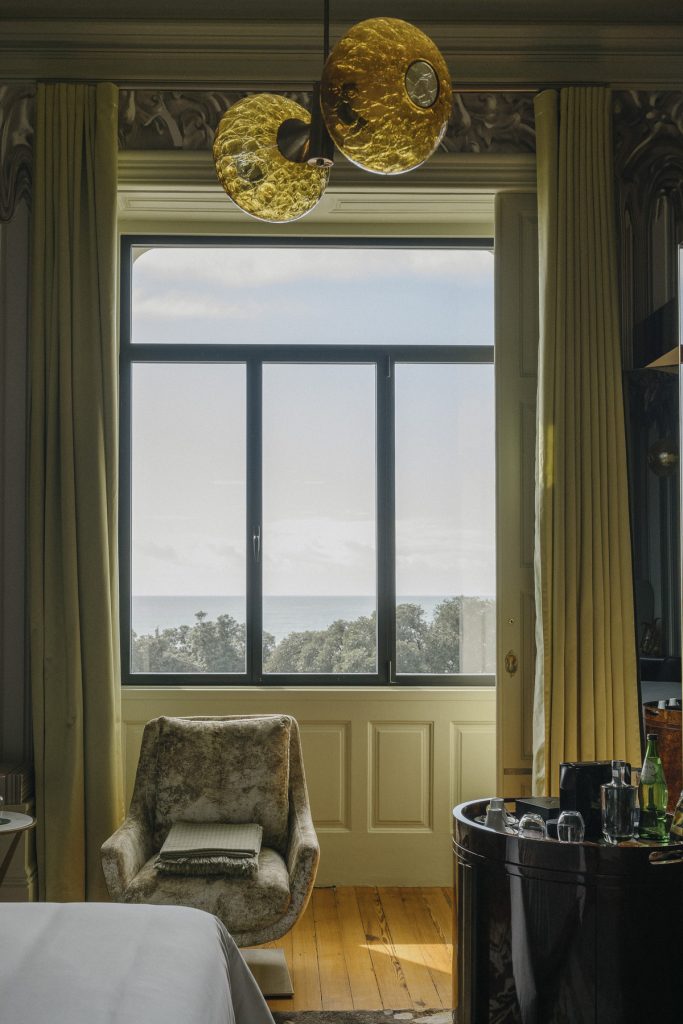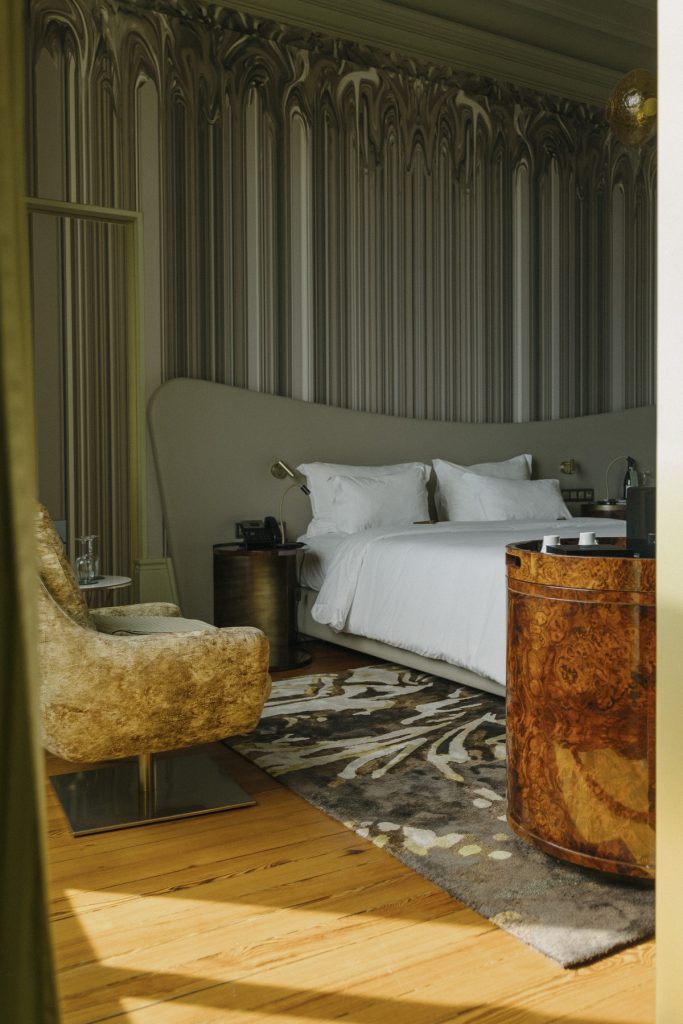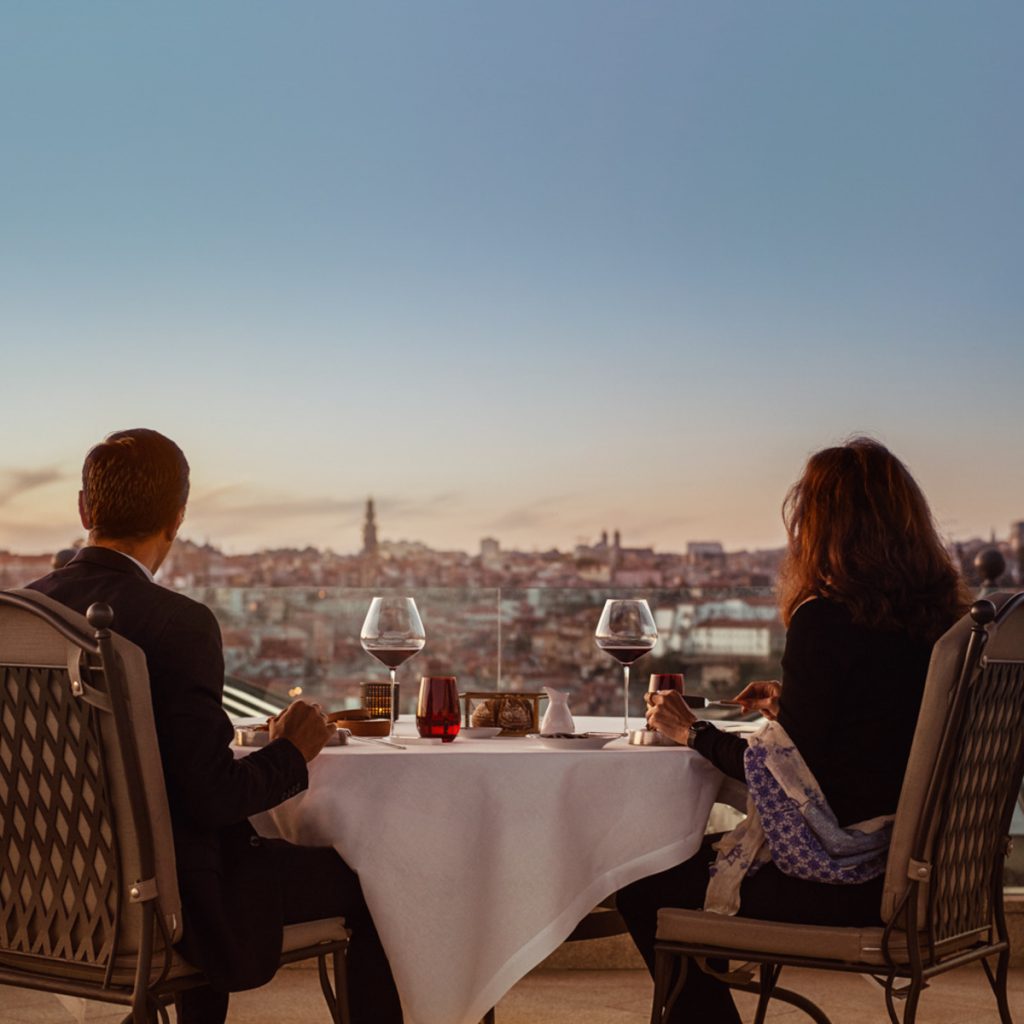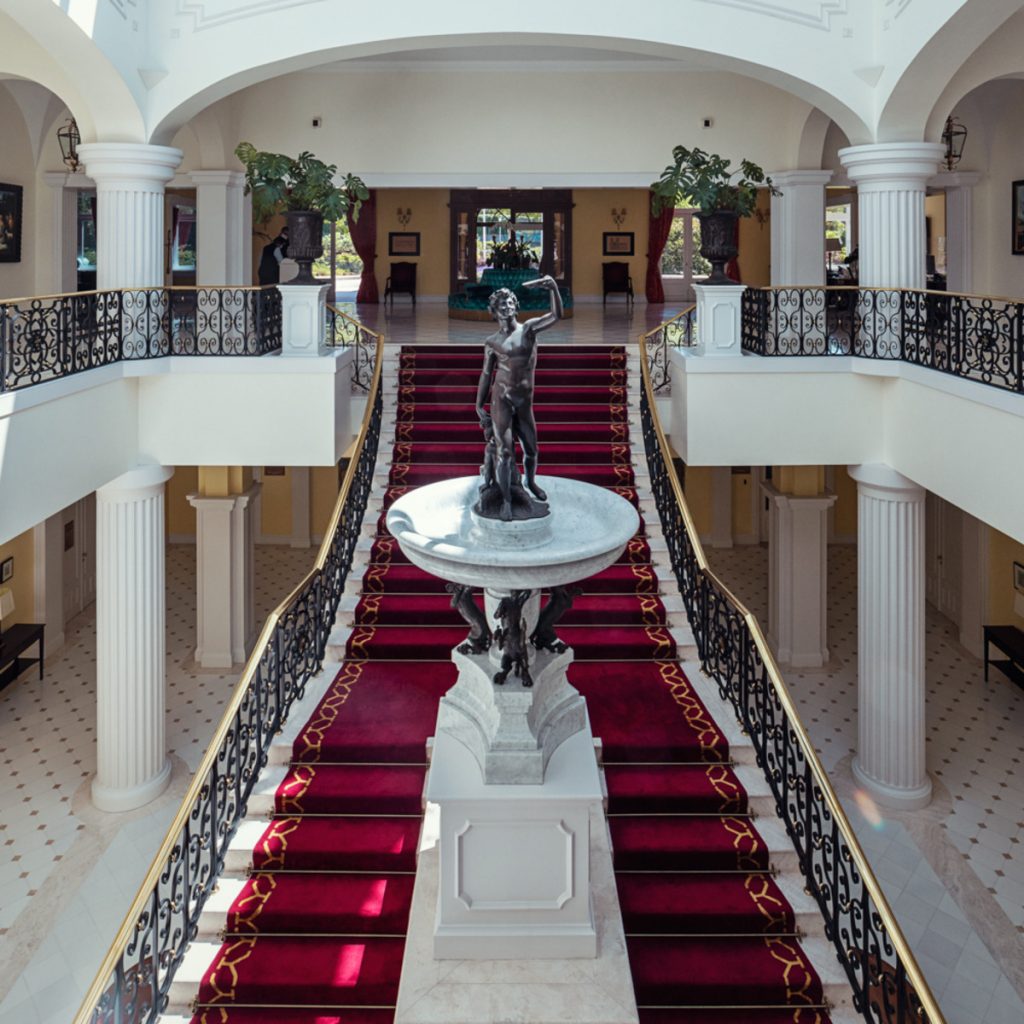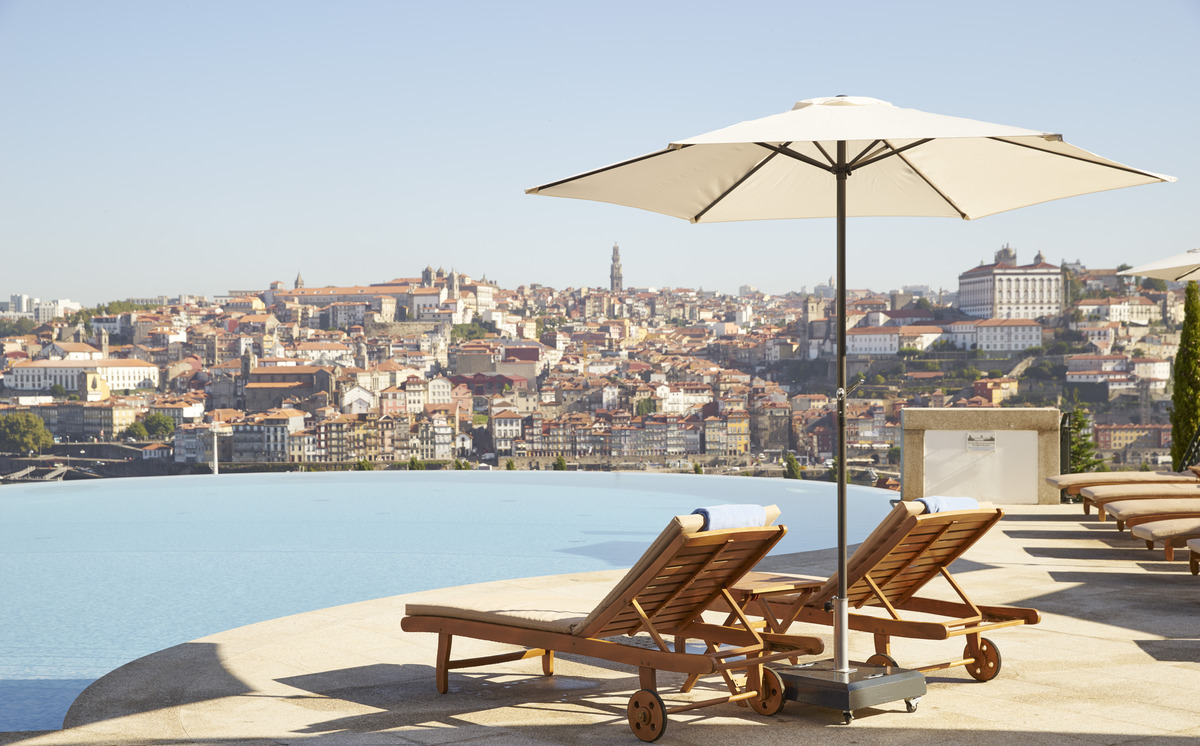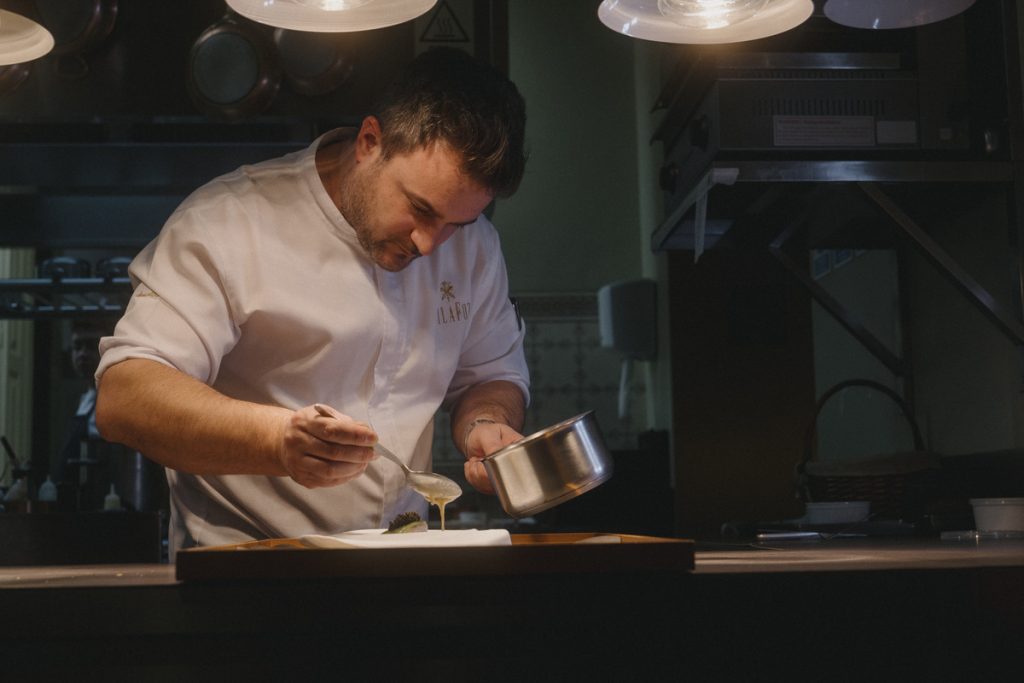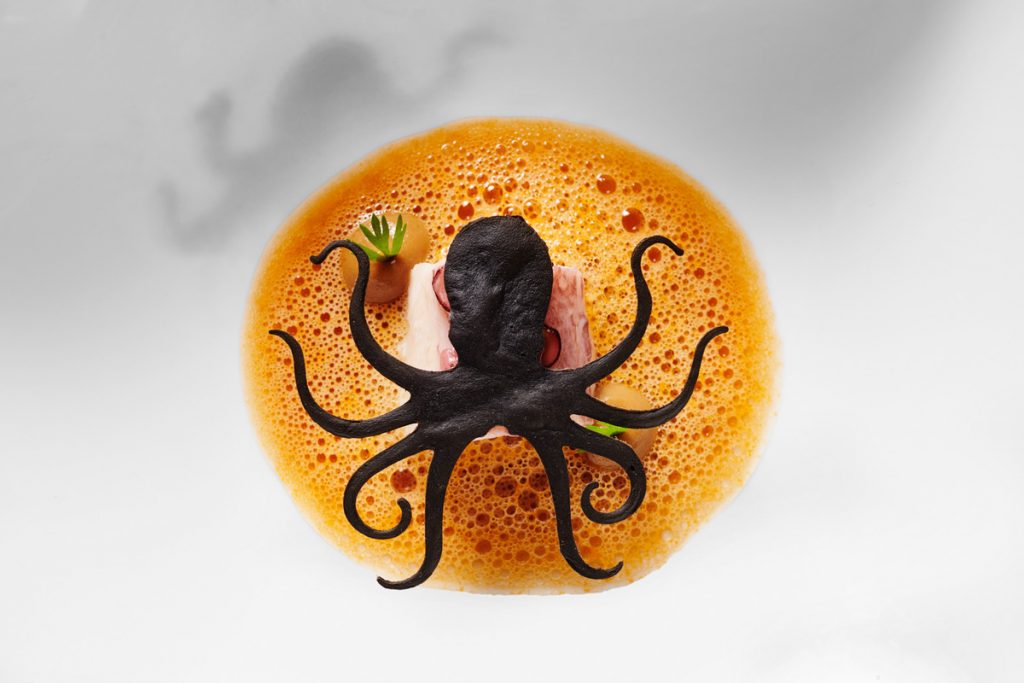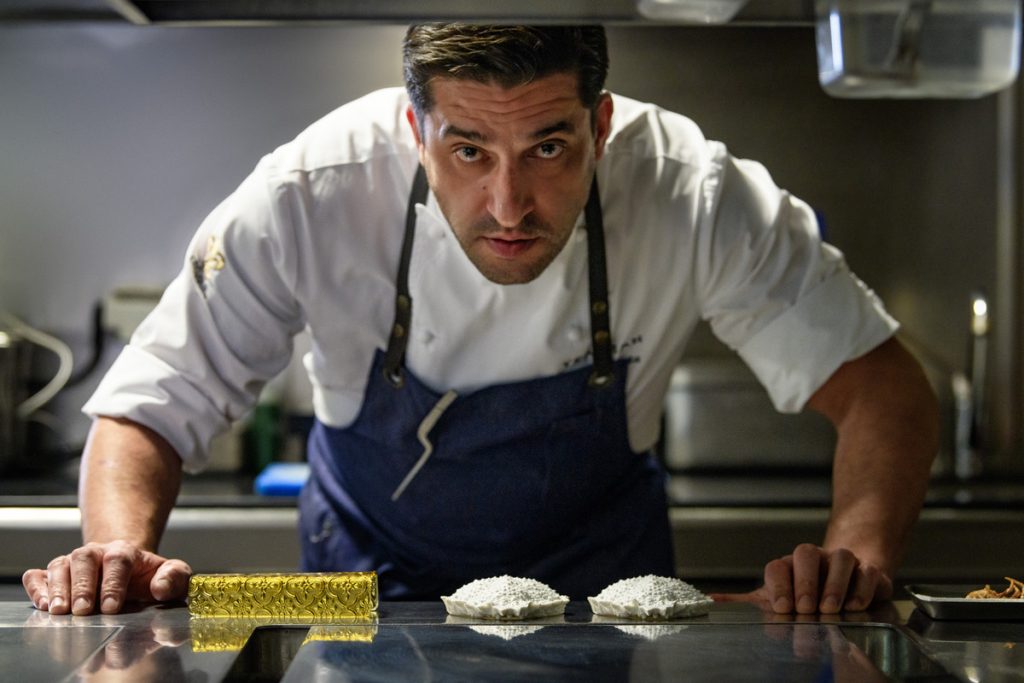Nothing so becomes a city as a streetcar—the jerking glide and clanking slowness, the bare wooden pews and cyclopean headlamp, the snap and whizz of the electric rods bouncing from the roof. Standing on the hard concrete edge of the River Douro in Porto, Portugal, you can watch the city’s two remaining trams trundle up and down the riverside, dropping off sightseers on their way to their heights of Miradouro, announcing their passage with their clanging bell.
Within earshot of those bells is the newly opened Hotel das Virtudes. Renovations have updated the building, which dates from the 16th century, without losing the medieval character of the original stonework with reproduction wooden beams. From both the rooftop garden and the Douro-facing rooms, it’s possible to relax with a drink looking out over the orange-tiled roofs of the surrounding warehouses, the imposing Customs House, and the Siren’s Palace, a pyramid that marked the limit of passage for incoming boats until they were cleared of having plague. The in-house Través Restaurant serves traditional Portuguese fare with a twist—deconstructed octopus rice, pork cheeks with peach—and hosts fado music recitals, Portugal’s national genre of bittersweet ballads.
Porto is not a large city, and if you are prepared to endure its hills, it is easily walkable. On street corners, roasted chestnuts are sold from blackened cauldrons and served in a sleeve of rolled newspaper. The city is also full of unforgettable structures—the swirling staircase of Livraria Lello bookshop, the blue-tiled façade of the Church of Santo António dos Congregados, the spindly Clérigos Tower, the asteroid-like Casa da Musica, the monument to the Heroes of the Peninsular War, a towering plinth atop which a lion subdues an eagle, a tribute to the Portuguese defeat of Napoleon’s invading French army.
The city also offers unforgettable filigree jewelry—fertility charms, holy keepsakes, emblems of maternal love, symbols of wealth, status and devotion. Filigree continues to be associated with many kinds of sentimentality in northern Portugal. As the House of Filigree shows, the craft goes beyond mawkish amulets, to a true testament to indelible patience and skill. The museum’s display of jewelry, masks, religious totems and scaled reproductions of galleons complete with all the rigging is astonishing. The fussiness required to wrangle such thin strands of gold together! The patience! The precision! Just how impressive it all is comes to light if you take the offer to make your own necklace. Sitting at the jeweler’s table to make your own gilded heart with a pair of tweezers and a spool of golden twine is the best way to make a memorable keepsake of the city.
Porto is renowned for its riverfront, but you cannot exactly see it from the city. For a better look, move across the river to Vila Nova de Gaia—which, as any Portuense will tell you, is a separate entity all its own, a place of wine and cod cakes. There, the best place to stay is the Yeatman Hotel, which, terraced like a Douro vineyard, sits atop the city, with each room having unobstructed views of the long port cellars stretching out below, the Eiffel-like Luís I bridge, and the colored dominos of the Porto riverfront. After a swim and a soak in their At the Wine Spa’s Roman bath, an aperitif at Dick’s Bar is a must. There are two excellent restaurants on site, the Michelin-starred Yeatman Gastronomic, and the Orangerie, which serves classic Portuguese dishes like the seashell-like cataplana, tiger prawns and pheasant with truffle.
With Gaia being in the core of Portugal’s wine and port trade, it’s best practice to spend an afternoon at the World of Wine, a refined and polished complex of museums and restaurants. It is nothing if not illuminating: in the Planet Cork exhibit, trace the path from tree to bottle stopper; peruse 9,000 years’ worth of drinking vessels at the Bridge Collection; learn your personalized grape type at the Wine Experience, then enjoy a little sample tippling to put your knowledge to the test.
Using only a map, it would be easy to mistake Porto for a seaside city. One visit will reveal, however, a distinctly riverine atmosphere—a place of bridges, boats clomping against stone docks, the whizz of fishing lines, the chatter of punters selling seats on water taxis. For a nautical feel, you have to go twenty minutes west, to the true coastal city of Foz. Once an isolated village of gardens and lavish villas, Foz is now an upmarket suburb with Michelin-starred restaurants, beach bars and green parrots in the palm trees. The waves can still be wicked, breaching the great coastal rocks and slamming against the candy-striped lighthouse that marks the entry to the Douro.
Luckily, coziness, in an almost English-cottage way, is something the Portuguese excel at. Check into the Vila Foz Hotel, a new establishment in a restored stately home along the moody Atlantic coast. Noted for its spa, which offers a variety of special massage and wellness treatments, the hotel also has a wonderful subterranean swimming pool. In the Vila Foz restaurant, also Michelin-starred, you are treated to chili-infused cocktails before embarking on a seafood meal that plays beautifully with texture and form—curls of roasted amberjack, shrimp dotted with fennel, sea urchin terrine and langoustine salad. A postprandial stroll along the sea, with the symphony of waves crashing on the shore, makes for the ultimate end to the meal, if not a visit, to this generous city flush with nuances and particularity.


